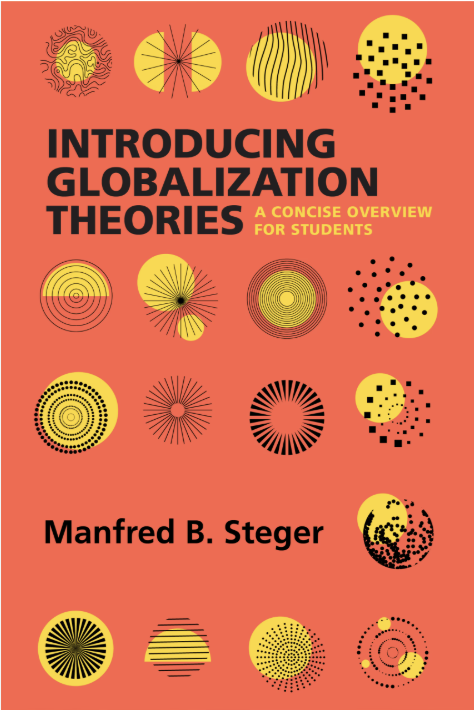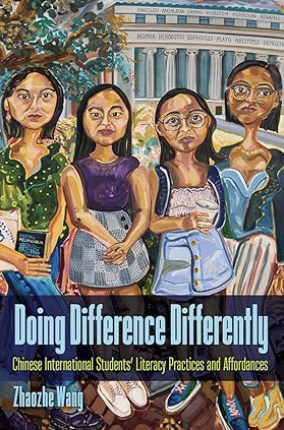Internationalism
Book Reviews: Internationalism

Introducing Globalization Theories: A Concise Overview for Students
Manfred B. Steger. Oakland, CA: University of California Press. 2025. 218 pages, including index.
Index terms — critical reflection, globalization, inclusivity, theory
Reviewed by Mickella Rast (mickellarast@gmail.com).
Many people have a vague grasp of what the word “globalization” means, but those seeking a deeper understanding should turn to Manfred B, Steger’s Introducing Globalization Theories: A Concise Overview for Students. And before you become too turned off, don’t let the title fool you: this book is for everyone interested in familiarizing themselves with globalization, not just students. Steger strives to balance brevity with accuracy and thoroughness, distilling the most major globalization theories into an accessible, interesting, and informative format. Though a great deal of detail has certainly been sacrificed, readers still come away with a baseline understanding of globalization theories.
Two of the greatest challenges facing globalization as a field are the disparate focuses on academia and Euro-American impacts. In this way, Introducing Globalization Theories serves as a microcosm of recent efforts to make the field more inclusive, both to the average layperson and the many countries outside of the U.S. and Europe. While Steger advances the first cause through his writing, he can only champion the second and caution against favoring exclusive Western-based knowledge.
The book opens with a brief dive into globalization theory as a field, creating a foundation off which the rest of the chapters build. Following this, Steger covers general theories, domain theories, complexity theories, critical theories, and new theories in successive chapters. Instead of trying to cover all theories within each category, Steger instead touches on just the major (most influential) theories. He explains each theory individually and how each overlaps and intersects.
Though readers may find the subject matter slightly confusing on principle, the succinctness of each chapter does not leave one bewildered. The first page or two of each chapter provides a broad outline of the chapter’s structure and what will be covered. Further clarifying each chapter’s content are helpful illustrations and brief synopses of relevant theorists, professors, and other influential figures. In this way, Steger manages to gently but unerringly advance readers through all the distinct modes of theorizing, a literary tour guide directing students and the average layperson through the globalization field’s dense foliage.
Also to his credit is the fact that Steger does not use the brevity of Introducing Globalization Theories as an excuse to focus only on the merits of each type of theory. Each chapter concludes with critical reflections that summarize the greatest benefits, but also the major shortcomings or gaps for the covered theories. He describes how different theories (or theorists) have contributed to the field while giving equal credence to the faults and further research needed.
In keeping with the book’s overall structure, Steger ends with a short speculation on the future of globalization theory and identifies three positive emerging trends: broader domains, complex thinking, and social and ecological engagements. He concludes with a plea that everyone, not just theorists and students, can certainly learn from: “bring about change [with the] ethical intent to create better futures for all sentient beings on this wonderous planet” (p. 201).

Doing Difference Differently: Chinese International Students’ Literacy Practices and Affordances
Zhaozhe Wang. Boulder, CO: Utah State University Press. 2024. 212 pages, including index.
Index Terms—cultural diversity, ecological affordances, international students, literacy practices, transcultural context
Reviewed by Jiawei Gao, Student, University of International Business and Economics, Beijing, China
The embedment of institutional discourse of cultural diversity has become ubiquitous worldwide as global flows of peoples, capitals, materials, and cultures continue to accelerate. This discourse, though intended to inclusively characterize international individuals, often muffles their individualized voices in a transcultural context. In Doing Difference Differently: Chinese International Students’ Literacy Practices and Affordance, Zhaozhe Wang challenges these constraints, unfettering multilingual writers from stereotyped attributes. He demonstrates how these individuals, specifically four Chinese international students at Wabash University in the US state of Indiana—Manna, Wentao, Yang, and Bohan—are afforded by ecologies and assemble their resources to distinguish themselves from institutionalized identity categories.
In this book “difference” refers to socially constructed attributes that predict behaviors and frame experiences, while ecology concerns the material and sociocultural environment in which individuals underline their differences. To understand how people do differences against the institutionalized structure of cultural diversity, Wang uses an ethnographic case study approach to analyze the students’ literacy practices and experiences on and off campus. The study interprets the students’ literate activities under a complex network of ecological affordances—structural, semiotic, experiential, social, bodily, and material—revealing how they neutralize the impact of institutional climate, doing differences differently.
Doing Difference Differently begins by setting the scene with the widespread adoption of institutionalized discourse of cultural diversity in American educational institutions, and then introduces the theoretical framework and methodology guiding the subsequent examination. Chapters 2 through 5 delve into the detailed accounts of four Chinese international students, unfolding how they leverage ecologies, negotiate meanings, and (re)define differences against an array of constructed attributes through varied approaches in the linguistically and culturally foreign educational context. Following the analysis of four participants’ literacy practices, Chapters 6 and 7 demystify the problematic mechanisms underlying the discourse of cultural diversity, underlining how ecology affordances empower students in their individualized practices of doing differences. Wang concludes by calling for cultivation of a critical sensibility that appreciates the dynamic nature of difference: a reflection of individuals’ literacy practices in diverse contexts rather than a static ensemble of fixed traits. This book also emphasizes that how people do difference is inherently “different:” involved in miscellaneous relations, people are agentive decision-makers capable of exploiting situated and dispersed affordances to practice differences with personal inclinations.
This book powerfully illustrates the interplay between one’s perceptions of differences under the institutionalized forces of cultural diversity and one’s practices of differences afforded by ecologies and influenced by personal choices in transcultural settings. The combination of ethnographic case studies with a holistic theoretical scaffolding provides an excellent model for intercultural and literacy studies. The reconceptualization of difference advocates for a dynamic and critical perspective on how international communities navigate and enact difference.

